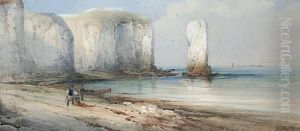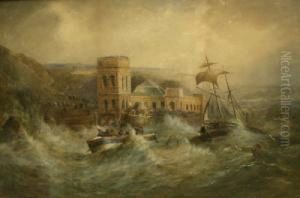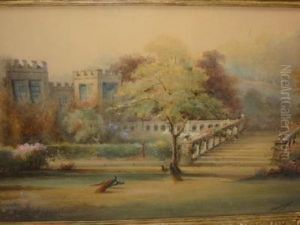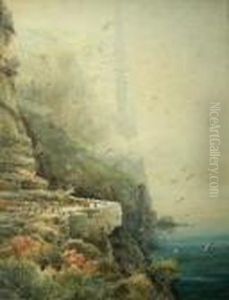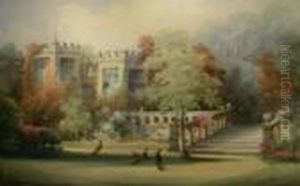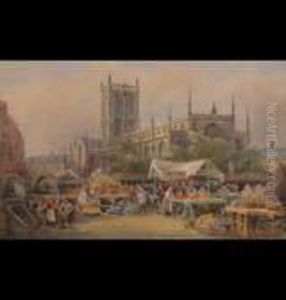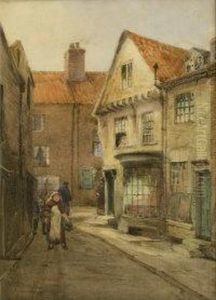Frederick William Booty Paintings
Frederick William Booty was an English landscape painter, known for his watercolor paintings. Born in 1840 in England, Booty developed an interest in art at a young age. He was particularly influenced by the English landscape tradition, which is evident in his choice of subjects and his delicate handling of light and color.
During his lifetime, Booty became a respected artist, though he never reached the fame of some of his contemporaries. He exhibited his work at various institutions, including the Royal Academy and the Society of British Artists. Booty's paintings often depict the English countryside, with a focus on the changing seasons and atmospheric conditions.
Booty's approach to watercolor was characterized by a meticulous attention to detail and a deep appreciation of the natural world. He aimed to capture the ephemeral qualities of the landscape, such as the mist of early morning or the glow of sunset, which give his works a romantic and often tranquil quality.
In addition to landscapes, Booty occasionally painted architectural subjects, showing historic buildings and rural cottages set within their natural environment. His work reflects a Victorian sensibility, with an emphasis on harmony between nature and the built environment.
Despite the quality of his work, Frederick William Booty did not achieve significant commercial success during his lifetime. His paintings were more appreciated by fellow artists and connoisseurs than by the general public. After his death in 1924, his work was somewhat forgotten, and only in recent years has there been a renewed interest in his contributions to English landscape painting.
Today, Booty's paintings can be found in private collections and occasionally appear at auction. They are valued for their historical significance and their representation of the English countryside during the Victorian era. Frederick William Booty's legacy is that of a skilled and dedicated artist who captured the serene beauty of England's rural landscapes.
